Climate Vulnerability Assessments
For Biosecurity Risks, the following were selected:
Crop diseases
- Fusarium wilt (Fusarium oxysporum f.sp. vasinfectum)
- Sclerotinia stem rot (Sclerotinia sclerotiorum)
- Verticillium wilt (Verticillium dahliae)
- Wheat stem rust (Puccinia graminis f. sp. tritici)
- Wheat stripe rust (Puccinia striiformis f. sp. tritici)
Horticultural pests
- Oriental fruit fly* (Bactrocera dorsalis)
- Queensland fruit fly (Bactrocera tryoni)
- Serpentine leafminer (Liriomyza huidobrensis)
Invasive weeds
Livestock parasites
- Biting midge (Culicoides brevitarsis)
- Buffalo fly (Haematobia exigua)
- Cattle tick (Rhipicephalus australis)
* not currently in NSW, potential future impact
† vector for Blue Tongue disease
Results
The Climate Vulnerability Assessment assessed the historical and future climate suitability for each biosecurity risk across NSW. These assessments considered the change in suitability between the historical (1981-2010) and future time periods (2036-2065), reported separately for the two emissions scenarios.
Maps of historical and future climate suitability for biosecurity risks were produced to demonstrate where in the state a risk is likely to thrive or else be limited by future climatic conditions. The maps are available in the individual biosecurity risk results reports and in the Climate Vulnerability Assessment Summary Report. The factsheets below provide the results by discussing the important impacts and providing interpretation of the drivers of changed suitability.
Care should be taken when interpreting these results. The Climate Vulnerability Assessment is intended to highlight potential changes in future climate suitability at industry and regional levels. It should not be interpreted at the scale of individual holdings.
Due to the large number of outputs, not all results have been provided at this stage but will appear in individual results reports. Biosecurity risk results reports will be released in 2025. Register your interest in receiving a copy by contacting vulnerability.assessment@dpi.nsw.gov.au.
Factsheets
Buffalo fly factsheet
PDF, 351.41 KB
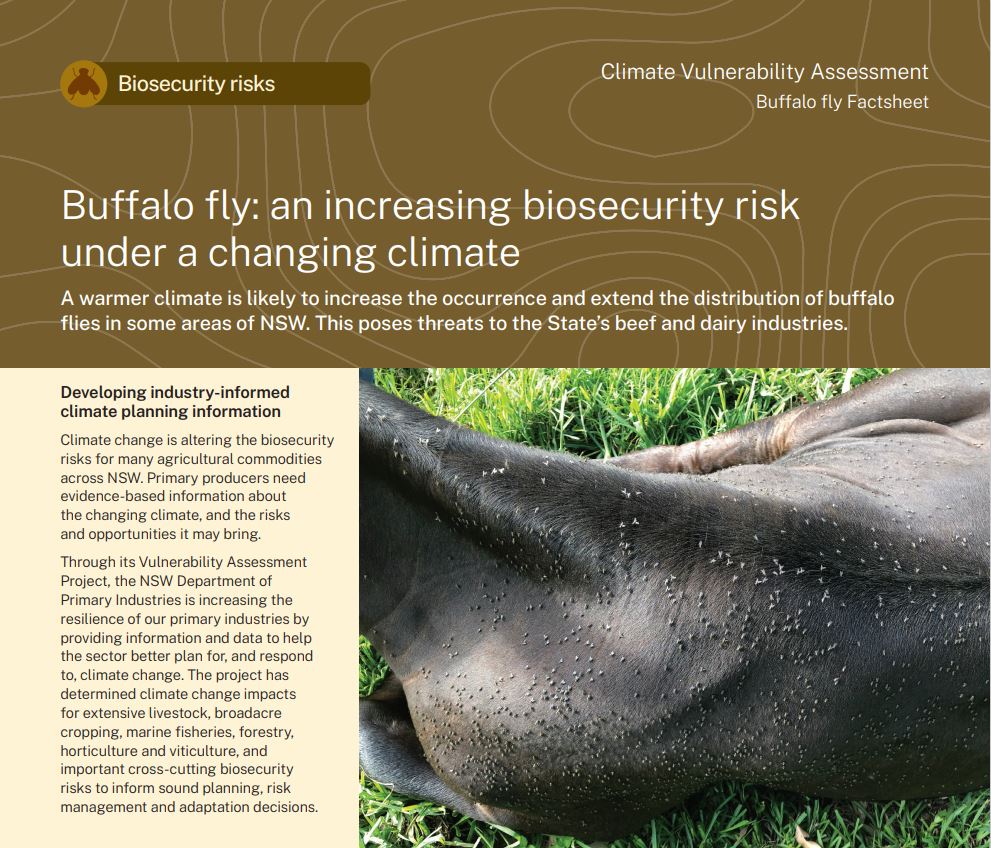
Oriental fruit fly factsheet
PDF, 362.26 KB
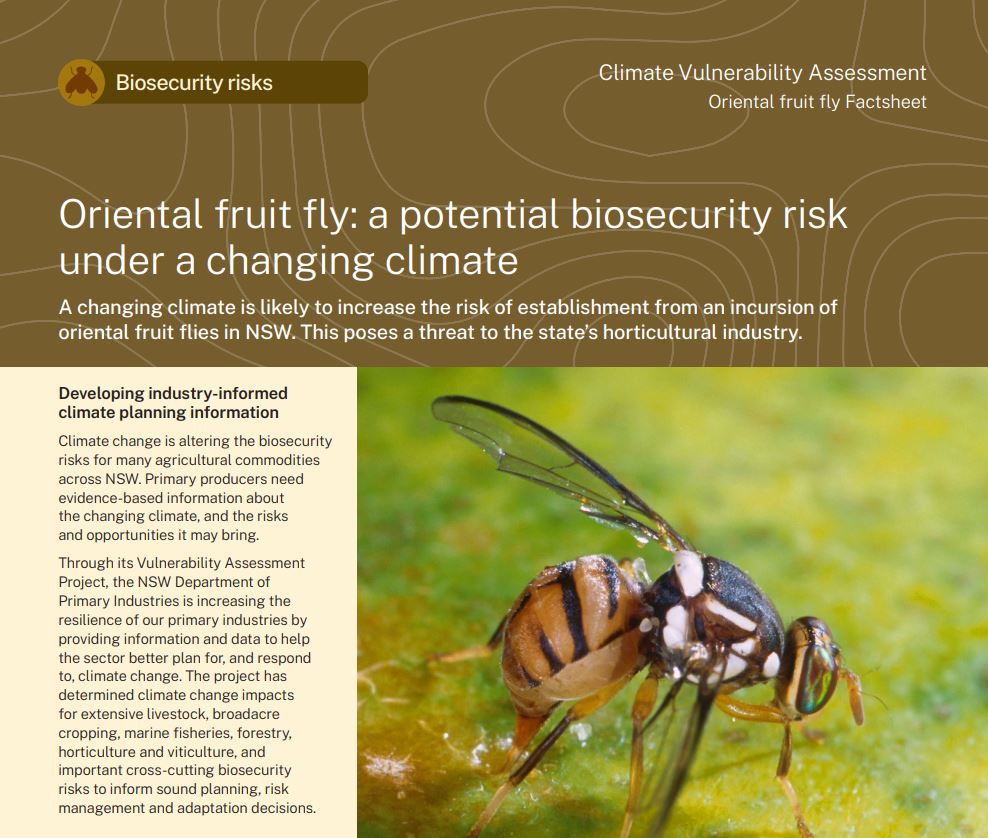
Parthenium weed factsheet
PDF, 356.78 KB
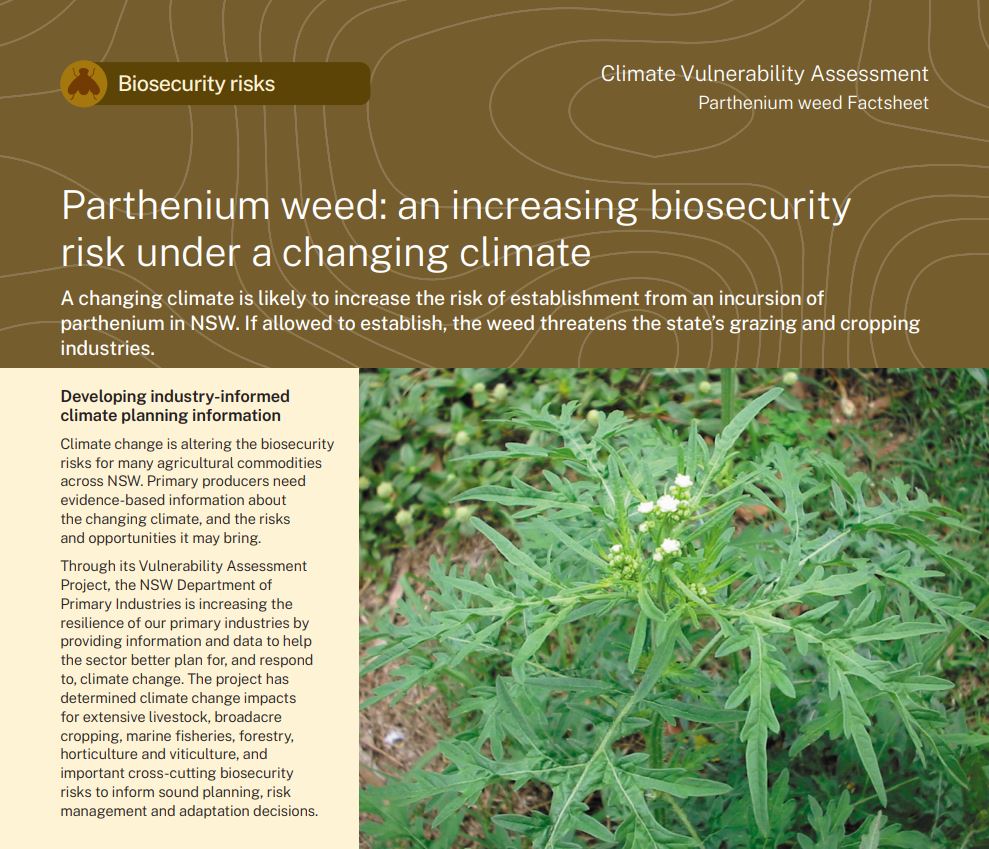
Queensland fruit fly factsheet
PDF, 262.96 KB
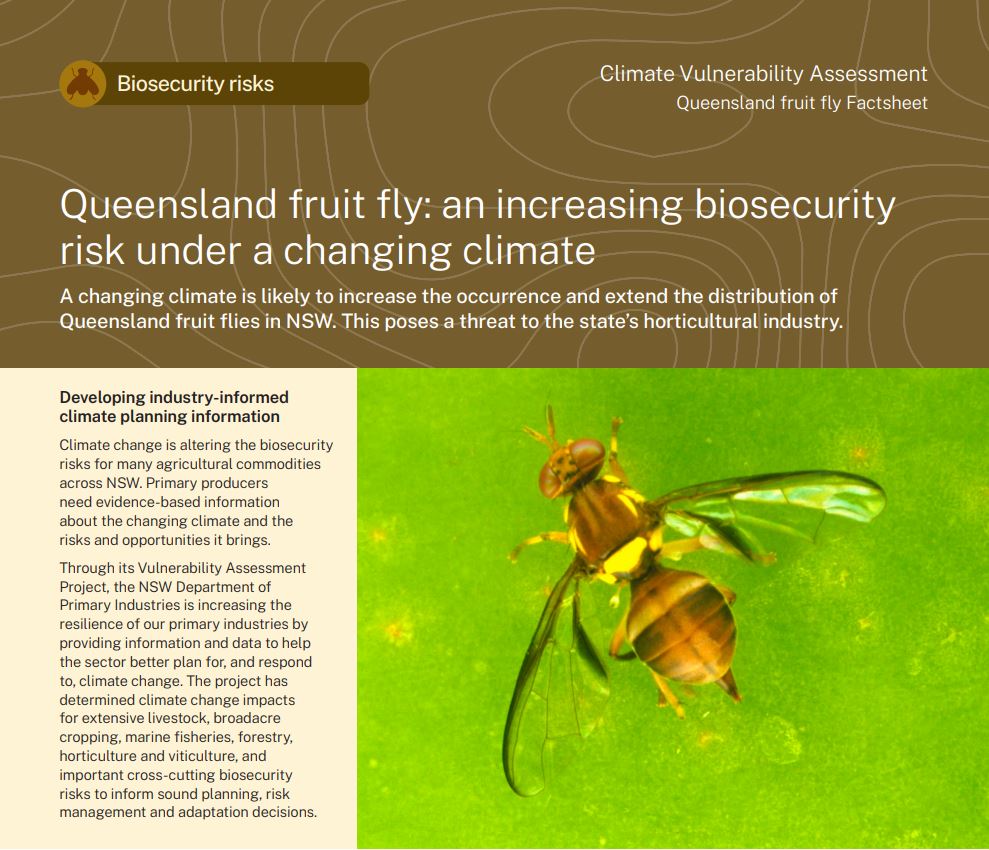
Sclerotinia stem rot factsheet
PDF, 346.45 KB
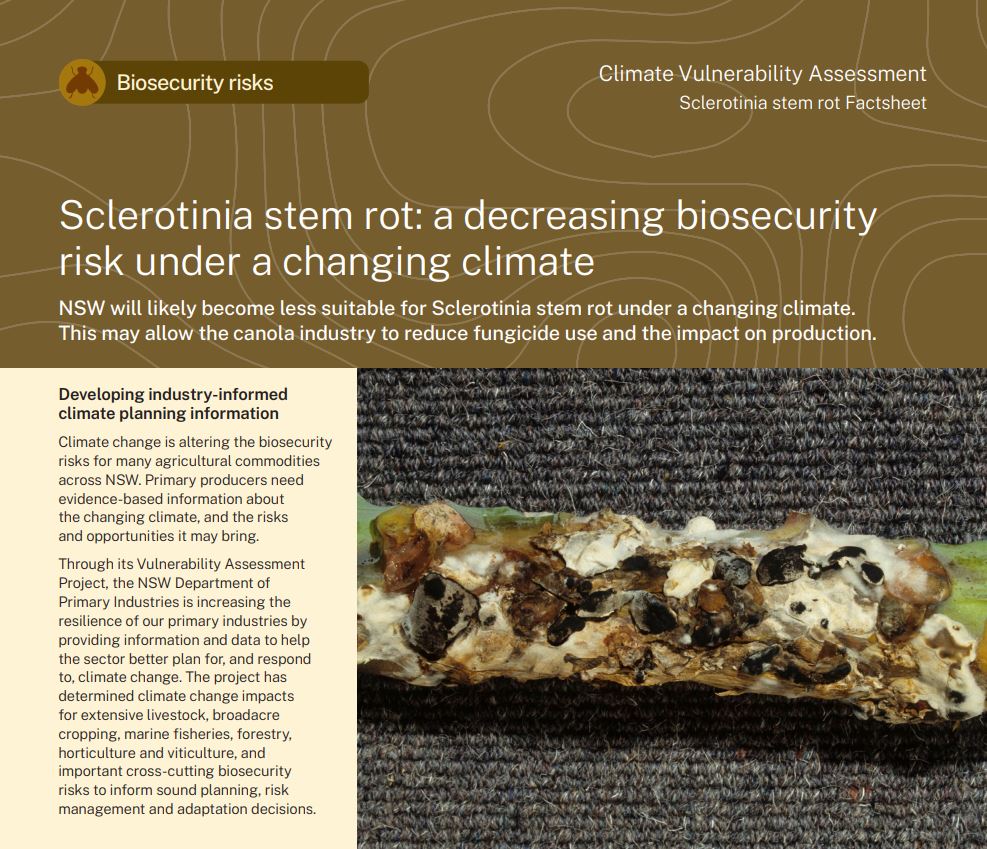
Serpentine leafminer factsheet
PDF, 381.81 KB
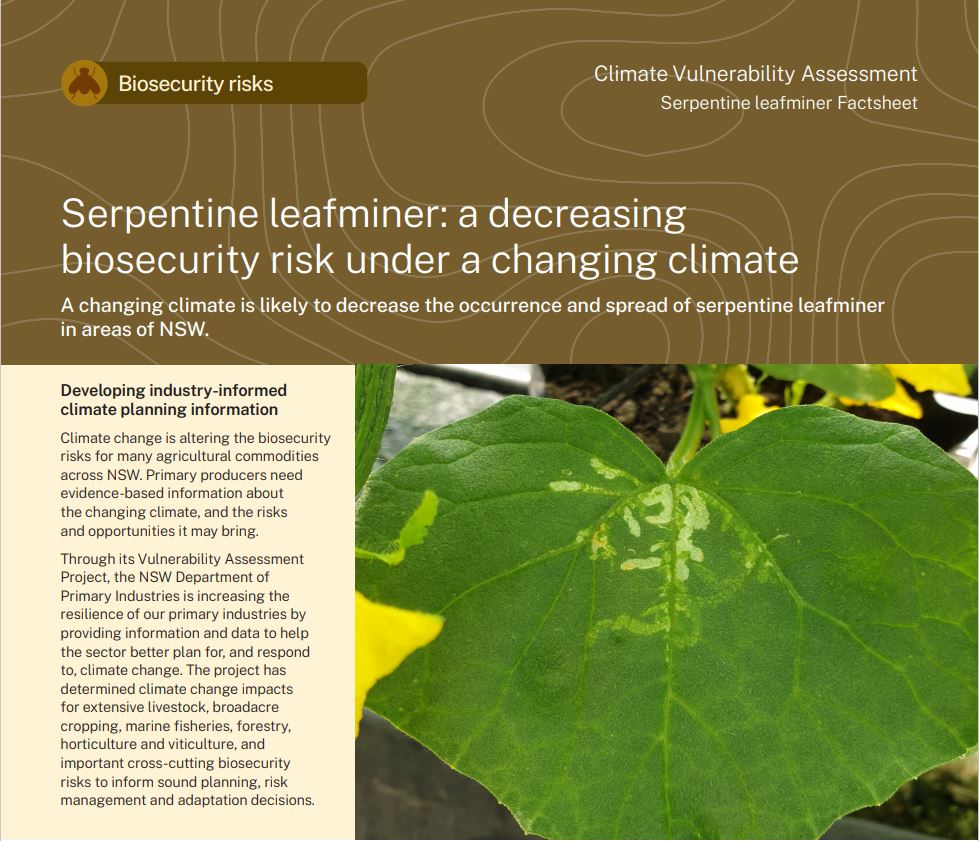
Serrated tussock factsheet
PDF, 489.67 KB
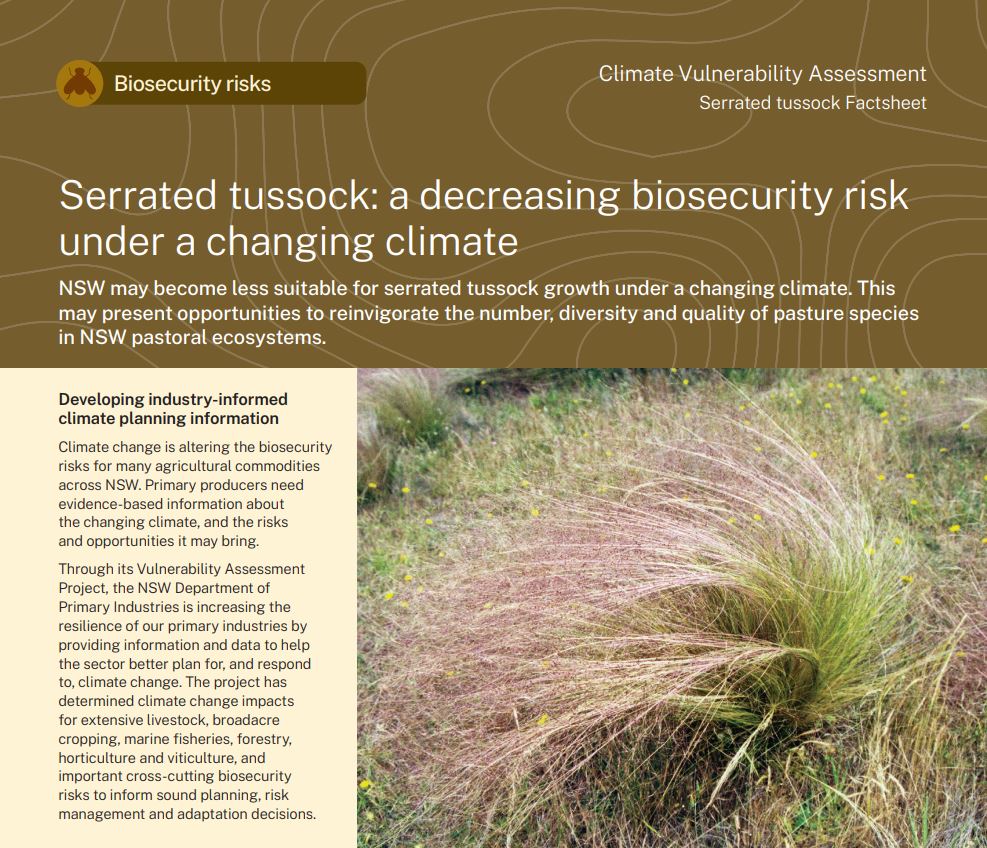
Verticillium wilt factsheet
PDF, 293.66 KB
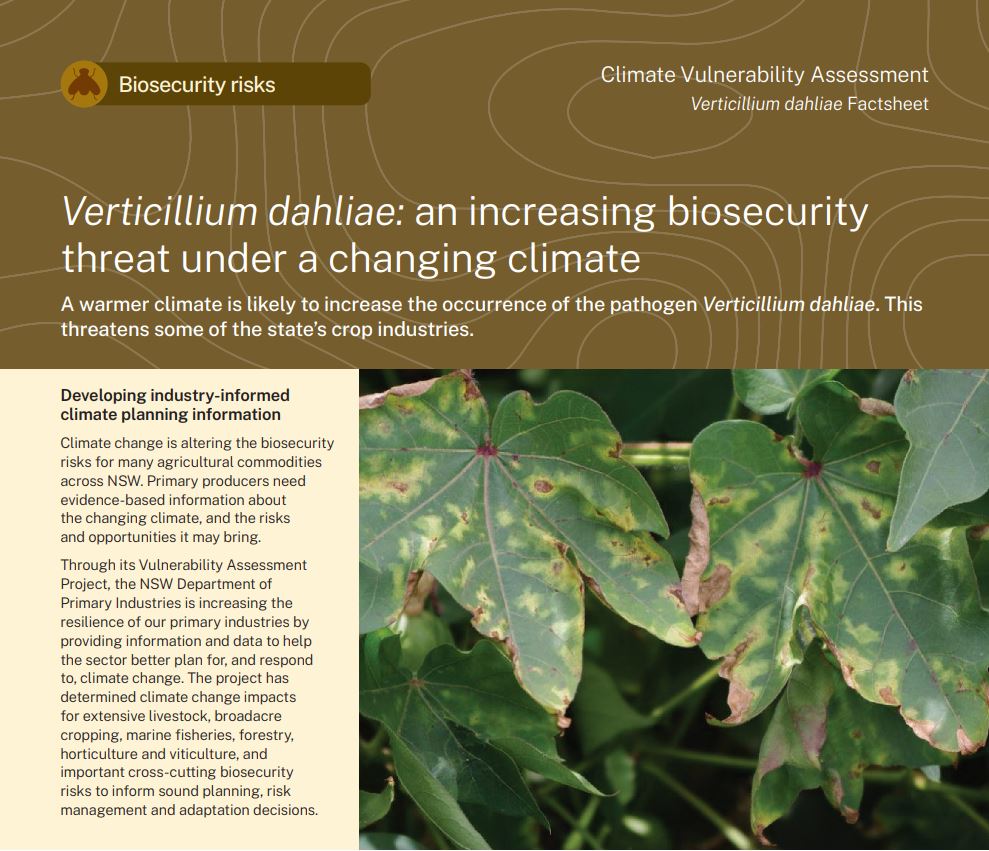
Wheat stem rust factsheet
PDF, 351.69 KB
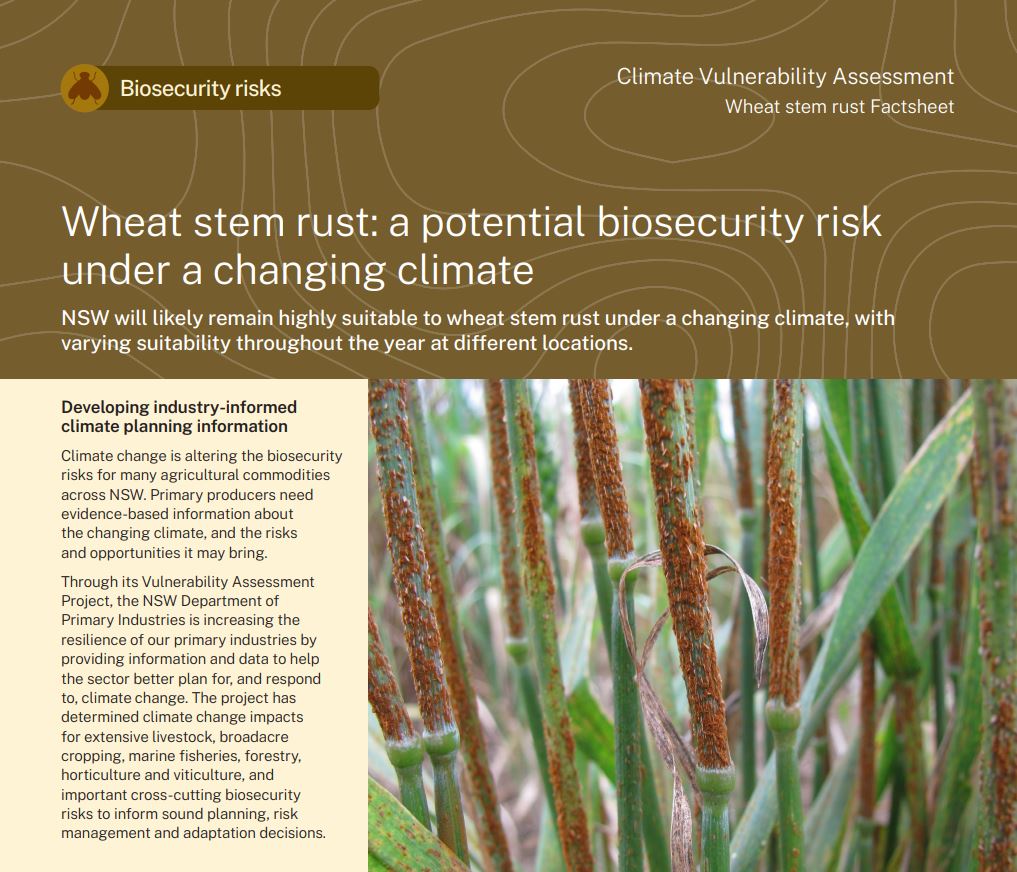
Wheat stripe rust factsheet
PDF, 2071.45 KB
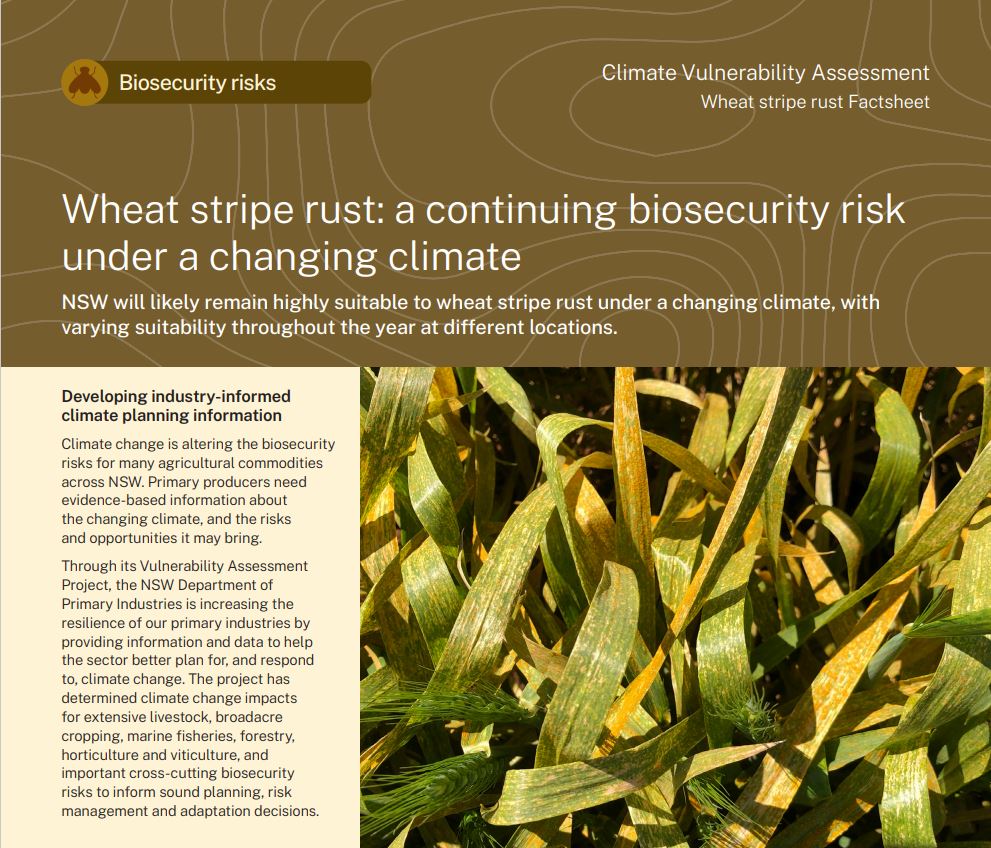
Fusarium factsheet
PDF, 1985.53 KB

Biting midge factsheet
PDF, 261.64 KB
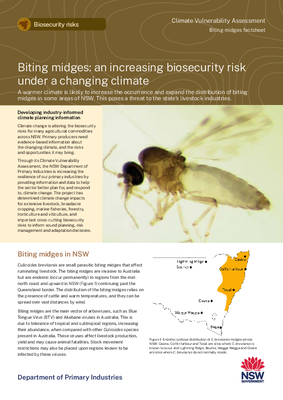
Cattle tick factsheet
PDF, 729.24 KB
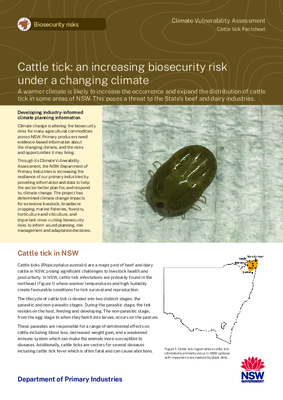
Approach
The Climate Vulnerability Assessment required a modelling approach that could be rapidly and consistently applied to different commodities and biosecurity risks to produce consistent and comparable models. To this end, a framework was developed which combined research literature, expert industry knowledge and climate data in a modelling approach known as ‘multi-criteria analysis’. The resulting models were used to evaluate the suitability of NSW’s climate for chosen commodities and biosecurity risks. The general assumptions for biosecurity risk multi-criteria analysis models were:
- a specific organism is described,
- susceptible host animals, plants or environment are present,
- a ‘green bridge’ is available where required for pathogen survival between seasons, and
- there is no treatment or control of the disease, pest, weed or parasite.
A monthly timescale approach was used for all biosecurity risks, with each life stage assessed separately for all months. Overall climate suitability for the risk was assessed alongside monthly suitability for each life stage to determine which months are likely to pose the greatest risk to host commodities. This approach highlights the risks where both an increase and a decrease in suitability are likely.
For more information on the methodology and data used in the climate vulnerability assessments, please take a look at either the methodology summary page or, for an in-depth explanation, the Climate Vulnerability Assessment Methodology Report.
References
NSW Department of Primary Industries (2017) New South Wales State of Biosecurity Report 2017.
AAS, Australian Academy of Sciences (2019). Australia’s silent invaders.